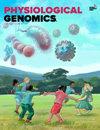Huang等人认为,PEA15-HKII经U2AF2稳定后,通过MAPK通路形成调控脊髓损伤后细胞命运的分子开关。
IF 2.5
4区 生物学
Q3 CELL BIOLOGY
引用次数: 0
摘要
本文章由计算机程序翻译,如有差异,请以英文原文为准。
Retraction for Huang et al., PEA15-HKII, stabilized by U2AF2, form a molecular switch governing cellular fate after spinal cord injury via MAPK pathway.
Spinal cord injury (SCI) is a devastating disease with poor prognosis. In this study, we sought to investigate the effects of proliferation and apoptosis adaptor protein 15 (PEA15) and hexokinase-Ⅱ (HKⅡ) on neuron cells after SCI. Firstly, we established the in vitro SCI model and cultured its neuron cells. Western blot detected the levels of autophagy- and apoptosis-related proteins in SCI neuron cells, and found high levels of LC3-Ⅱ, p62 and CASP12 in SCI neuron cells. Quantitative real time RT-PCR (RT-qPCR) showed the high levels of PEA15 and HKⅡ in SCI neuron cells. Functional experiments verified the positive regulation of PEA15 and HKⅡ on cell apoptosis. Furthermore, PEA15 and HKⅡ promote SCI neuron cell apoptosis by activating mitogen-activated protein kinase (MAPK) pathway. Co-immunoprecipitation (CoIP) and GST pull down assays showed that HKⅡ could interact with phosphorylated PEA15 in SCI neuron cells. Then the interaction of HKⅡ and PEA15-pSer116 was demonstrated to restrain cell apoptosis after SCI. Simultaneously, U2 small nuclear RNA auxiliary factor 2 (U2AF2) could stabilize the mRNA stability of PEA15 and HKⅡ. In summary, PEA15-HKII form a molecular switch to regulate the apoptosis of SCI neuron cells by regulating MAPK pathway, providing a new direction for SCI study.
求助全文
通过发布文献求助,成功后即可免费获取论文全文。
去求助
来源期刊

Physiological genomics
生物-生理学
CiteScore
6.10
自引率
0.00%
发文量
46
审稿时长
4-8 weeks
期刊介绍:
The Physiological Genomics publishes original papers, reviews and rapid reports in a wide area of research focused on uncovering the links between genes and physiology at all levels of biological organization. Articles on topics ranging from single genes to the whole genome and their links to the physiology of humans, any model organism, organ, tissue or cell are welcome. Areas of interest include complex polygenic traits preferably of importance to human health and gene-function relationships of disease processes. Specifically, the Journal has dedicated Sections focused on genome-wide association studies (GWAS) to function, cardiovascular, renal, metabolic and neurological systems, exercise physiology, pharmacogenomics, clinical, translational and genomics for precision medicine, comparative and statistical genomics and databases. For further details on research themes covered within these Sections, please refer to the descriptions given under each Section.
 求助内容:
求助内容: 应助结果提醒方式:
应助结果提醒方式:


